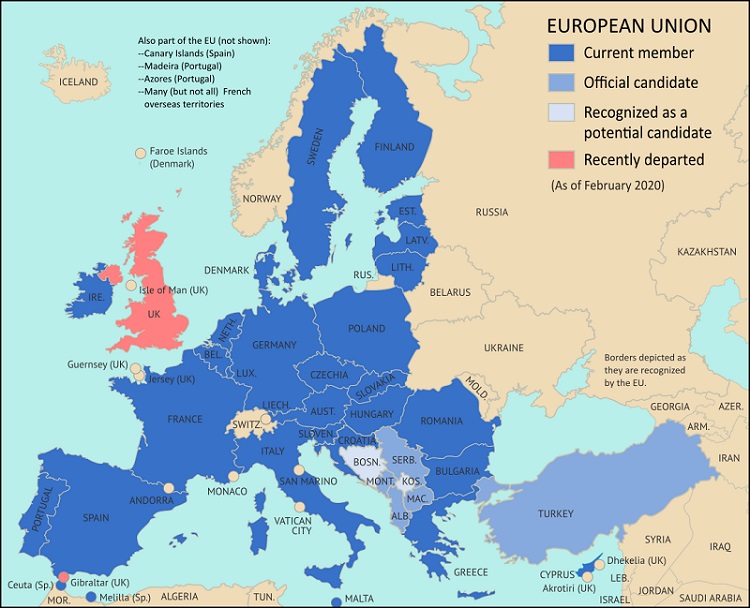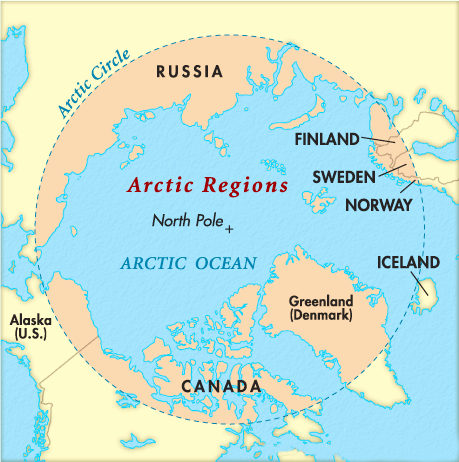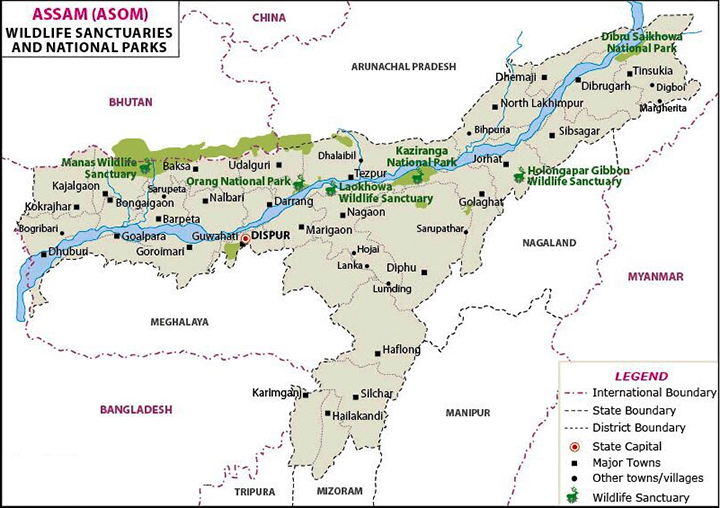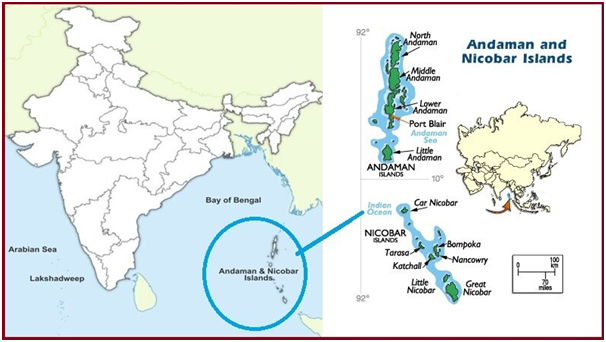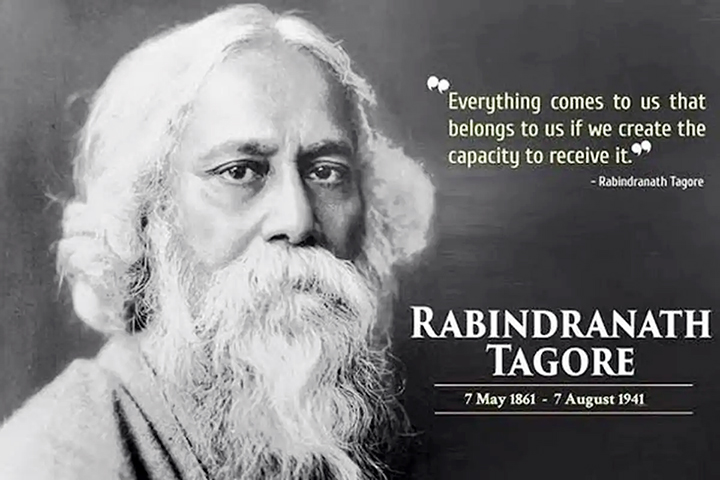International Relations
India-EU Leaders’ Meeting
Why in News
Recently, Indian Prime Minister participated in the India-European Union (EU) Leaders’ Meeting.
- The meeting was held in a hybrid format with the participation of leaders of all the 27 EU Member States as well as the President of the European Council and the European Commission.
- This is the first time that the EU hosted a meeting with India in the EU+27 format.
- The meeting was the initiative of the Portuguese Presidency of the Council of the EU.
Key Points
- Free Trade Negotiations:
- Agreed to relaunch free trade negotiations by resuming talks that were suspended for the Bilateral Trade and Investment Agreement (BTIA).
- India and EU had launched talks for having a wide-ranging Free Trade Agreement (FTA), officially called broad-based BTIA, long ago in 2007.
- The BTIA was proposed to encompass trade in goods, services and investments.
- However, the talks stalled in 2013 over differences on market access and movement of professionals.
- The EU was India’s largest trading partner in goods 2019-20, ahead of China and the US, with total trade close to USD 90 billion.
- Connectivity Partnership:
- Launched an ambitious and comprehensive ‘Connectivity Partnership’ which is focused on enhancing digital, energy, transport and people-to-people connectivity.
- It is based on the shared principles of social, economic, fiscal, climate and environmental sustainability, and respect for international law and commitments.
- It will catalyse private and public financing for connectivity projects. It will also foster new synergies for supporting connectivity initiatives in third countries, including in the Indo-Pacific.
- Also signed the contract for the second tranche of USD 150 million from the EU for the Pune Metro rail project.
- Launched an ambitious and comprehensive ‘Connectivity Partnership’ which is focused on enhancing digital, energy, transport and people-to-people connectivity.
- Climate Change:
- Reiterated their commitment to achieving the goals of the Paris Agreement and agreed to strengthen joint efforts for mitigation, adaptation and resilience to the impacts of climate change, as well as providing means of implementation including finance in the context of Conference of the Parties (COP 26).
- India welcomed the EU’s decision to join the Coalition for Disaster Resilient Infrastructure (CDRI).
- Reiterated their commitment to achieving the goals of the Paris Agreement and agreed to strengthen joint efforts for mitigation, adaptation and resilience to the impacts of climate change, as well as providing means of implementation including finance in the context of Conference of the Parties (COP 26).
- Technology:
- Agreed to enhance bilateral cooperation on digital and emerging technologies such as 5G, Artificial Intelligence (AI), Quantum and High-Performance Computing including through the early operationalization of the Joint Task Force on AI and the Digital Investment Forum.
- Strengthening Partnership:
- Desired to further strengthen the India-EU Strategic Partnership based on a shared commitment to democracy, fundamental freedoms, rule of law and multilateralism.
- India appreciated the prompt assistance provided by the EU and its member states to combat its second Covid wave.
- India also requested the EU’s support for its joint proposal with South Africa for a Trade Related Aspects of Intellectual Property (TRIPS) waiver on vaccine production-related patents in the World Trade Organisation (WTO).
- Recently, the US has supported the proposal. However, India failed to secure the support of the European leaders.
Way Forward
- India-EU Leaders’ Meeting has set a significant milestone by providing a new direction to the Strategic Partnership and giving a fresh impetus for implementing the ambitious India-EU Roadmap 2025 adopted at the 15th India-EU Summit held in July 2020.
- There is a need for comprehensive trade agreement that brings in strong rules, removes barriers to trade in goods and services and investments and opens up free markets. Addressing the mutual trust deficit, facilitating people’s mobility and connectivity can improve mutual understanding and create opportunities for innovation and growth.
- Enhanced business cooperation between EU and India can diversify their strategic value chains and reduce economic dependency—notably on China.
Governance
Post Devolution Revenue Deficit
Why in News
The Ministry of Finance has released the second monthly instalment of Post Devolution Revenue Deficit (PDRD) Grant of Rs. 9,871 crore for the year 2021-22 to 17 States.
Key Points
- About the Post Devolution Revenue Deficit (PDRD):
- The Centre provides the Post Devolution Revenue Deficit Grant to the States under Article 275 of the Constitution.
- The grants are released as per the recommendations of the Finance Commission in monthly installments to meet the gap in Revenue Accounts of the States post-devolution (of the divisible tax pool of the Centre).
- The 15th Finance Commission has recommended post devolution revenue deficit grants amounting to about Rs. 3 trillion over the five-year period ending FY26.
- The number of states qualifying for the revenue deficit grants decreases from 17 in FY22, the first year of the award period to 6 in FY26, the last year.
- The eligibility of States to receive this grant and the quantum of grant was decided by the Commission based on the gap between assessment of revenue and expenditure of the State.
- States Recommended for PDRD Grants:
- Over the five-year period, Andhra Pradesh, Assam, Haryana, Himachal Pradesh, Karnataka, Kerala, Manipur, Meghalaya, Mizoram, Nagaland, Punjab, Rajasthan, Sikkim, Tamil Nadu, Tripura, Uttarakhand and West Bengal are recommended to be provided with the deficit grants. The Ministry of Finance has accepted the recommendation.
- Article 275 of the Constitution:
- It provides for the payment of such sums as Parliament may by law provide as grants-in aid to such States as Parliament may determine to be in need of assistance.
- The grants are paid out of the Consolidated Fund of India in each year, and different sums may be fixed for different States.
- These grants are to be of the nature of capital and recurring sums as may be necessary.
- These aim to enable that State to meet the costs of such schemes of development as may be undertaken by it with the approval of the Government of India for the purpose of promoting the welfare of the Scheduled Tribes in that State or raising the level of administration of the Scheduled Areas there in to that of the administration of the rest of the areas of that State.
- Grants are primarily intended to correct Inter-State disparities in financial resources and to coordinate the maintenance and expansion of the welfare schemes of the State Governments on a uniform national level.
Revenue Account and Capital Account
- A revenue account includes all the revenue receipts also known as current receipts of the government. These receipts include tax revenues and other revenues of the government.
- A capital account is an account that includes the capital receipts and the payments. It basically includes assets as well as liabilities of the government. Capital receipts comprise the loans or capital that are raised by governments by different means.
Centre State Financial Relations
- Constitutional Provisions:
- Indian Constitution has made elaborate provisions, relating to the distribution of the taxes as well as non-tax revenues and the power of borrowing, supplemented by provisions for grants-in-aid by the Union to the States.
- Article 268 to 293 in Part XII deals with the provisions of financial relations between Centre and States.
- Taxing Powers: The Constitution divides the taxing powers between the Centre and the states as follows:
- The Parliament has exclusive power to levy taxes on subjects enumerated in the Union List, the state legislature has exclusive power to levy taxes on subjects enumerated in the State List.
- Both can levy taxes on the subjects enumerated in Concurrent List whereas residuary power of taxation lies with Parliament only.
- Distribution of the Tax Revenue:
- Duties Levied by the Union but Collected and Appropriated by the States (Article 268):
- Includes stamp duties on bills of exchange, cheques, etc.
- Taxes Levied as well as Collected by the Union, but Assigned to the States (Article 269):
- These include taxes on the sale and purchase of goods (other than newspapers) in the course of inter-state trade or commerce or the taxes on the consignment of goods in the course of inter-state trade or commerce.
- Levy and Collection of Goods and Services Tax in Course of Inter-State Trade or Commerce (Article 269-A):
- The Goods and Services Tax (GST) on supplies in the course of inter-state trade or commerce are levied and collected by the Centre.
- But, this tax is divided between the Centre and the States in the manner provided by Parliament on the recommendations of the GST Council.
- Taxes Levied and Collected by the Union but Distributed between the Union and the States (Article 270):
- This category includes all taxes and duties referred to in the Union List except the following:
- Duties and taxes referred to in Articles 268, 269 and 269-A.
- Surcharge on taxes and duties referred to in Article 271 (this goes to the Centre exclusively).
- Any cess levied for specific purposes.
- This category includes all taxes and duties referred to in the Union List except the following:
- Duties Levied by the Union but Collected and Appropriated by the States (Article 268):
- Grants-in-Aid: Besides sharing of taxes between the Centre and the States, the Constitution provides for Grants-in-aid to the States from the Central resources. There are two types of grants:
- Statutory Grants (Article 275): These grants are given by the Parliament out of the Consolidated Fund of India to such States which are in need of assistance. Different States may be granted different sums.
- Specific grants are also given to promote the welfare of scheduled tribes in a state or to raise the level of administration of the Scheduled areas therein.
- Discretionary Grants (Article 282): It empowers both the Centre and the states to make any grants for any public purpose, even if it is not within their respective legislative competence.
- Under this provision, the Centre makes grants to the states. These grants are known as discretionary grants, the reason being that the Centre is under no obligation to give these grants and the matter lies within its discretion.
- These grants have a two-fold purpose: to help the state financially to fulfil plan targets; and to give some leverage to the Centre to influence and coordinate state action to effectuate the national plan.
- Statutory Grants (Article 275): These grants are given by the Parliament out of the Consolidated Fund of India to such States which are in need of assistance. Different States may be granted different sums.
Biodiversity & Environment
Third Arctic Science Ministerial
Why in News
Recently, India participated in the 3rd Arctic Science Ministerial (ASM) and shared plans for research and long-term cooperation in the Arctic Region.
- The first two meetings—ASM1 and ASM2—were held in the USA in 2016 and Germany in 2018, respectively.
Arctic Region
- The Arctic region comprises the Arctic Ocean and parts of countries such as Canada, Denmark (Greenland), Norway, Russia, USA (Alaska), Finland, Sweden and Iceland.
- These countries together form the core of the Arctic Council, an intergovernmental forum.
- HQ: Norway
Key Points
- Third Arctic Science Ministerial Conference:
- Host Countries: It was jointly organised by Iceland and Japan.
- It was the first Ministerial meeting being held in Asia (Tokyo in Japan).
- Objective: It provides opportunities to various stakeholders, including academia, indigenous communities, governments and policymakers, to enhance collective understanding of the Arctic region, emphasize and engage in constant monitoring, and strengthen observations.
- Theme: ‘Knowledge for a Sustainable Arctic’.
- Host Countries: It was jointly organised by Iceland and Japan.
- India’s Stand:
- To contribute observing systems in the Arctic, both in-situ and by remote sensing.
- Would deploy open ocean mooring in the Arctic for long-term monitoring of upper ocean variables and marine meteorological parameters.
- The launch of NISAR (NASA-ISRO Synthetic Aperture Radar) satellite mission, in collaboration with the USA, is underway.
- Contributions to the Sustained Arctic Observational Network (SAON) would continue.
NASA-ISRO Synthetic Aperture Radar
- NISAR will scan the globe every 12 days over the course of its three-year mission of imaging the Earth’s land, ice sheets and sea ice to give an unprecedented view of the planet.
- It aims to conduct global measurements of the cause and consequences of land surface changes using advanced radar imaging.
Sustaining Arctic Observing Network
- It is a joint activity of the International Arctic Science Committee (IASC) and the Arctic Council.
- IASC is a non-governmental, international scientific organization.
- The purpose is to support and strengthen the development of multinational engagement for sustained and coordinated pan-Arctic observing and data sharing systems.
- India’s Engagement in the Arctic:
- India’s engagement with the Arctic dates back to 1920 with the signing of the Svalbard Treaty in Paris.
- Since July 2008, India has had a permanent research station in the Arctic called Himadri at NyAlesund, Svalbard Area in Norway.
- India received the ‘Observer’ country status in the Arctic Council in 2013 and is one among the 13 countries across the world, including China, to have that position which was again renewed in 2018.
- It has also deployed a multi-sensor moored observatory called IndARC in the Kongsfjorden fjord since July 2014.
- The research in the Arctic region from India is coordinated, conducted, and promoted by the National Centre for Polar and Ocean Research (NCPOR), Goa, under the Ministry of Earth Sciences, Government of India.
- Recently, India drafted a new Arctic policy that aims at expanding scientific research, sustainable tourism and exploration of mineral oil and gas in the Arctic region.
- Significance of Arctic Study for India:
- Though none of India’s territory directly falls in the Arctic region, it is a crucial area as the Arctic influences atmospheric, oceanographic and biogeochemical cycles of the earth’s ecosystem.
- Arctic warming and its ice melt are global concerns as they play a pivotal role in regulating climate, sea levels, and maintaining biodiversity.
- There is growing evidence of connection between the Arctic and the Indian Ocean (which modulates the Indian monsoon). Hence, improving the understanding of physical processes and quantifying the impact of Arctic ice melt on the Indian summer monsoon is very important.
Biodiversity & Environment
Kaziranga Animal Corridor
Why in News
There are cases of clearance of forest land, digging and construction activities on at least three animal corridors within the eco-sensitive zone of the Kaziranga National Park and Tiger Reserve.
- The Supreme Court of India in its 2019 order had said that “No new construction shall be permitted on private lands which form part of the nine identified animal corridors.”
Key Points
- About the Animal Corridor:
- Wildlife or animal corridors are meant to ensure safe passage for animals between two isolated habitats.
- In wildlife parlance, corridors are mainly of two types: functional and structural.
- Functional corridors are defined in terms of functionality from the perspective of the animal (basically areas where there have been recorded movement of wildlife).
- Structural corridors are contiguous strips of forested areas and structurally connect the otherwise fragmented blocks of the landscape.
- When structural corridors are affected by human anthropogenic activities, functional corridors automatically widen because of animal use.
- Kaziranga Animal Corridor:
- A special committee formed by the Supreme Court in its report had recommended the delineation of nine animal corridors in Kaziranga National Park (KNP). The nine identified animal corridors are:
- Amguri, Bagori, Chirang, Deosur, Harmati, Hatidandi and Kanchanjuri are in Nagaon district and Haldibari and Panbari corridors are in Golaghat district of Assam.
- The nine corridors that already exist behave as functional corridors, but according to the new recommendation, the corridors will act as both structural and functional, on the basis of need.
- The report suggested that structural corridors should be made free of all human induced disturbances except for the forestry and wildlife management practices.
- On the other hand, functional corridors (which might become important when structural corridors are disturbed), can have regulated multi-use with restrictions on land use change.
- Significance of Animal Corridors:
- These corridors are crucial for the rhinos, elephants, tigers, deer and other animals that escape a flooded Kaziranga during the monsoon months for the safety of the hills of Karbi Anglong district beyond the highway skirting the southern boundary of the tiger reserve.
- Once the rain clear, the animals make their way back to the grasslands.
- A special committee formed by the Supreme Court in its report had recommended the delineation of nine animal corridors in Kaziranga National Park (KNP). The nine identified animal corridors are:
- Kaziranga National Park and Tiger Reserve:
- It is located in the State of Assam and covers 42,996 Hectare (ha).
- It is the single largest undisturbed and representative area in the Brahmaputra Valley floodplain.
- It was declared as a National Park in 1974.
- It has been declared a tiger reserve since 2007.
- It was declared a UNESCO World Heritage Site in 1985.
- It is recognized as an Important Bird Area by BirdLife International.
- It is the home of the world's most one-horned rhinos.
- Pobitora Wildlife Sanctuary has the highest density of one-horned rhinos in the world and second highest number of Rhinos in Assam after Kaziranga National Park.
- The National Highway 37 passes through the park area.
- The park also has more than 250 seasonal water bodies, besides the Diphlu River running through it.
- Other National Parks in Assam:
- Dibru-Saikhowa National Park,
- Manas National Park,
- Nameri National Park,
- Rajiv Gandhi Orang National Park.
Biodiversity & Environment
NITI Aayog’s Project for Great Nicobar Island
Why in News
Recently, the Environment Appraisal Committee which flagged concerns over the project has now ‘recommended’ it ‘for grant of terms of reference’ for Environmental Impact Assessment (EIA) studies.
- In August, 2020 the Prime Minister had declared that the Andaman and Nicobar islands will be developed as a "maritime and startup hub".
Key Points
- About the Project:
- The proposal includes an international container trans-shipment terminal, a greenfield international airport, a power plant and a township complex spread over 166 sq. km. (mainly pristine coastal systems and tropical forests).
- It is estimated to cost Rs. 75,000 crore.
- Issues with Project:
- Lack of details on seismic and tsunami hazards, freshwater requirement details, and details of the impact on the Giant Leatherback turtle.
- No details of the trees to be felled—a number that could run into millions since 130 sq. km. of the project area has some of the finest tropical forests in India.
- A number of additional issues include about Galathea Bay, the site of the port and the centrepiece of the NITI Aayog proposal.
- Galathea Bay is an iconic nesting site in India of the enigmatic Giant Leatherback, the world’s largest marine turtle—borne out by surveys done over three decades.
- Ecological surveys in the last few years have reported a number of new species, many restricted to just the Galathea region.
- These include the critically endangered Nicobar shrew, the Great Nicobar crake, the Nicobar frog, the Nicobar cat snake, a new skink (Lipinia sp), a new lizard (Dibamus sp,) and a snake of the Lycodon sp that is yet to be described.
- The site selection for the port had been done mainly on technical and financial criteria, ignoring the environmental aspects.
- Action Points listed out by the Committee:
- There is a need for an independent assessment of terrestrial and marine biodiversity, a study on the impact of dredging, reclamation and port operations, including oil spills.
- The need for studies of alternative sites for the port with a focus on environmental and ecological impact, especially on turtles, analysis of risk-handling capabilities.
- A seismic and tsunami hazard map, a disaster management plan, details of labour, labour camps and their requirements, an assessment of the cumulative impact, and a hydro-geological study to assess impact on round and surface water regimes.
Great Nicobar
- About:
- Great Nicobar is the southernmost island of the Nicobar Islands Archipelago.
- It covers 1,03,870 hectares of unique and threatened tropical evergreen forest ecosystems.
- It is home to a very rich ecosystem, including 650 species of angiosperms, ferns, gymnosperms, bryophytes, among others.
- In terms of fauna, there are over 1800 species, some of which are endemic to this area.
- Ecological Characteristics:
- The Great Nicobar Biosphere Reserve harbours a wide spectrum of ecosystems comprising tropical wet evergreen forests, mountain ranges reaching a height of 642 m (Mt. Thullier) above sea level, and coastal plains.
- Tribe:
- The Mongoloid Shompen Tribe, about 200 in number, live in the forests of the biosphere reserve particularly along the rivers and streams.
- They are hunters and food gatherers, dependent on forest and marine resources for sustenance.
- Another Mongoloid Tribe, Nicobarese, about 300 in number, used to live in settlements along the west coast.
- After the tsunami in 2004, which devastated their settlement on the western coast, they were relocated to Afra Bay in the North Coast and Campbell Bay.
- The Mongoloid Shompen Tribe, about 200 in number, live in the forests of the biosphere reserve particularly along the rivers and streams.
Important Facts For Prelims
Rabindranath Tagore
Why in News
The Prime Minister paid tribute to Gurudev Rabindranath Tagore on 160th Jayanti on 7th May, 2021.
Key Points
- Birth:
- He was born in Calcutta on 7th May 1861.
- About:
- He was also referred to as ‘Gurudev’, ‘Kabiguru’, and ‘Biswakabi’
- He is regarded as the outstanding creative artist of modern India and hailed by W.B Yeats, Rabindranath Tagore was a Bengali poet, novelist, and painter, who was highly influential in introducing Indian culture to the west.
- He was an exceptional literary figure and a renowned polymath who singlehandedly reshaped the region's literature and music.
- He was a good friend of Mahatma Gandhi and is said to have given him the title of Mahatma.
- He had always stressed that unity in diversity is the only possible way for India’s national integration.
- He had spoken at the World Parliament for Religions in the years 1929 and 1937.
- Contributions:
- He is said to have composed over 2000 songs and his songs and music are called ‘Rabindra Sangeet’ with its own distinct lyrical and fluid style.
- He is responsible for modernising Bengali prose and poetry. His notable works include Gitanjali, Ghare-Baire, Gora, Manasi, Balaka, Sonar Tori, He is also remembered for his song ‘Ekla Chalo Re’.
- He published his first poems aged 16 under the pen-name ‘Bhanusimha’.
- He not only gave the national anthems for two countries, India and Bangladesh, but also inspired a Ceylonese student of his, to pen and compose the national anthem of Sri Lanka.
- Besides all his literary achievements he was also a philosopher and educationist who in 1921 established the Vishwa-Bharati University, a university that challenged conventional education.
- Awards:
- In 1913 he was awarded the Nobel Prize in Literature for his work on Gitanjali.
- He was the first non-European to receive the Nobel Prize.
- In 1915 he was awarded knighthood by the British King George V. In 1919, following the Jallianwalla Bagh massacre he renounced his Knighthood.
- In 1913 he was awarded the Nobel Prize in Literature for his work on Gitanjali.
- Death:
- He died on 7th August 1941 in Calcutta.
Important Facts For Prelims
Birth Anniversary of Maharana Pratap
Why in News
The Prime Minister of India paid tributes to Maharana Pratap on his Jayanti.
Key Points
- Description:
- Rana Pratap Singh also known as Maharana Pratap was born on 9th May 1540 in Kumbhalgarh, Rajasthan.
- He was the 13th King of Mewar and was the eldest son of Udai Singh II
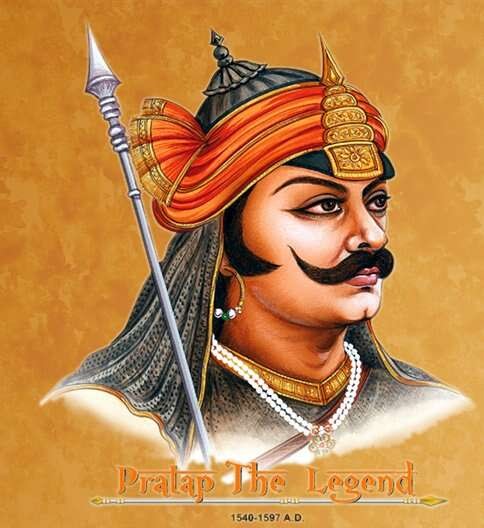
- Maharana Udai Singh II ruled the kingdom of Mewar, with his capital at Chittor.
- Udai Singh II was also a founder of the city of Udaipur (Rajasthan).
- Battle of Haldighati:
- The Battle of Haldighati was fought in 1576 between Rana Pratap Singh of Mewar and Raja Man Singh of Amber who was the general of the Mughal emperor Akbar.
- Maharana Pratap fought a brave war, but was defeated by Mughal forces.
- It is said that Maharana Pratap’s loyal horse named Chetak, gave up his life as the Maharana was leaving the battlefield.
- Reconquest:
- After 1579, the Mughal pressure relaxed over Mewar and Pratap recovered Western Mewar including Kumbhalgarh, Udaipur and Gogunda.
- During this period, he also built a new capital, Chavand, near modern Dungarpur.
- Death:
- He died on 19th January, 1597. He was succeeded by his son Amar Singh, who submitted in 1614 to Emperor Jahāngīr, son of Akbar.
Important Facts For Prelims
Mucormycosis
Why in News
A number of Covid-19 patients are developing a serious fungal infection known as Mucormycosis also called black fungus.
Key Points
- Mucormycosis:
- It is a serious but rare fungal infection caused by a group of molds called mucormycetes, which is abundant in the environment.
- It mainly affects people who have health problems or take medicines that lower the body’s ability to fight germs and sickness.
- The types of Mucormycosis are: Rhinocerebral (Sinus and Brain), Pulmonary (Lung), Gastrointestinal, Cutaneous (Skin), and disseminated Mucormycosis.
- Transmission:
- It occurs through inhalation, inoculation, or ingestion of spores from the environment.
- Mucormycosis does not spread between people or between people and animals.
- Symptoms:
- These include pain and redness around eyes and/or nose, fever, headache, coughing, shortness of breath, bloody vomits, and altered mental status.
- Warning signs can include toothache, loosening of teeth, blurred or double vision with pain.
- Prevention:
- Avoiding areas with a lot of dust like construction or excavation sites, avoiding direct contact with water-damaged buildings and flood water after hurricanes and natural disasters and avoiding activities that involve close contact to soil.
- Treatment:
- Mucormycosis needs to be treated with prescription antifungal medicine.
- In some cases, it can require surgery.

